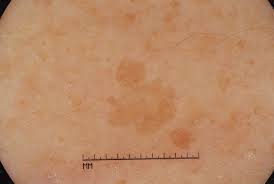

A recent study in the Journal of Investigative Dermatology linked the formation of dark spots on the skin—known as lentigenes—with levels of traffic-related air pollution and air pollution-associated gases.
Women from Germany and China participated in the study, but the most significant changes were revealed in the cheeks of Asian women over 50.
“In addition to particulate matter, traffic-related air pollution is characterized by increased concentration of nitrogen dioxide (NO2),” said lead investigator Jean Krutmann, M.D., of the IUF-Leibniz Research Institute for Environmental Medicine, Dusseldorf, Germany. “While NO2 exposure is known to be associated with low lung function and lung cancer, the effect of NO2 on human skin has never been investigated. This is important because environmentally-induced lung and skin aging appear to be closely related.”
One group of 806 Caucasian German women participated in the Study on the influence of Air pollution on Lung function, Inflammation and Aging (SALIA). In a range between 67 to 80 years old, the age average was 73.5, and 20% of this group had a smoking history. These participants were reported to have spent an average of 2.6 hours per day in the sun.
The second group was made up of 743 Han Chinese women from the Taizhou region.Their ages ranged from 28 to 70 with an average of 59, and 20% of this group had a history of smoking as well. The average daily sun exposure, however, was reported at 3.5 hours.
Many more women in the SALIA group reported using cosmetics with sun protection, 61% vs. 4.2%.
The mean levels of NO2 exposure were:
GBA Group is a leading group of laboratories with a solid reputation backed by over…
Now, INTECH CO. developed stripping tape to collect Dead skin cell. - Basic Skin Research…
K-Beauty's Global Takeover: A Success Story The Korean beauty industry has achieved an unprecedented milestone:…